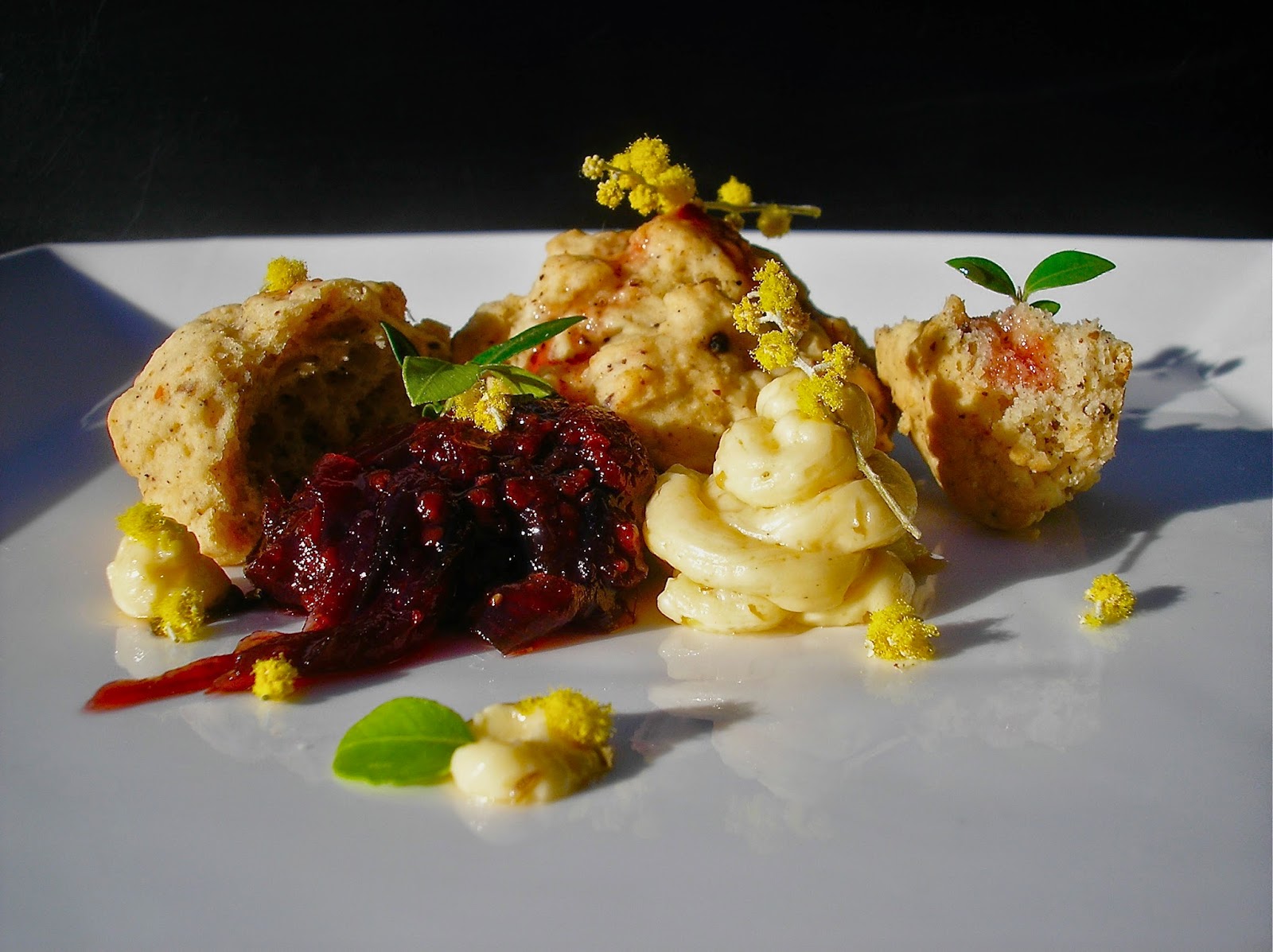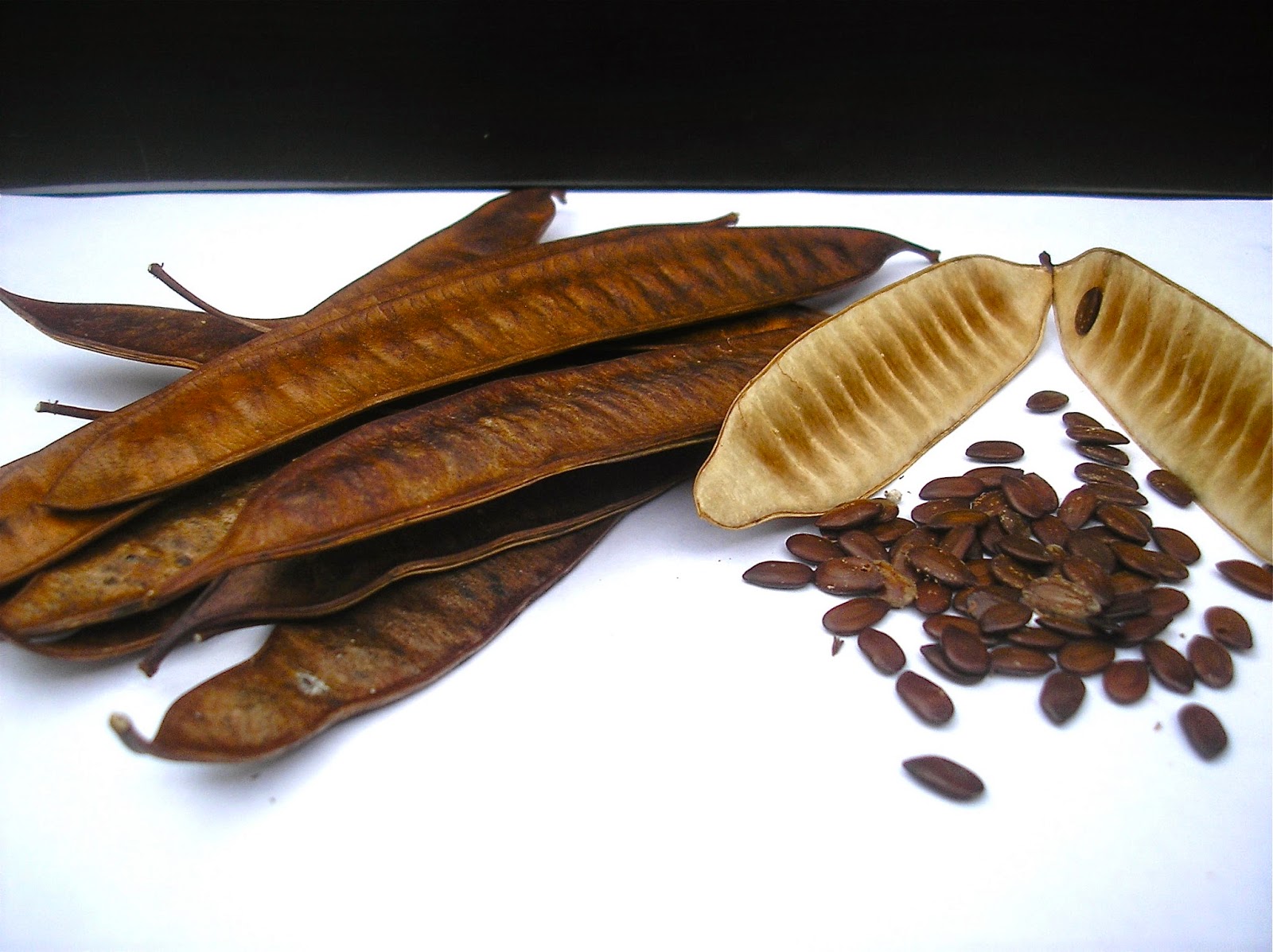Below are a detailed description of the three different preparations and the methods I used in making the various snacks you see above.
PUMPERNICKEL TOAST- ( Cod liver, horseradish, cucumber, red caviar & fennel frond.)
This was a very simple no fuss presentation, also the one presented to start the diner off allowing them to capture the pumpernickel in its pure form, only toasted to enhance the flavour. On top of squares I cut from thinly sliced pumpernickel and toasted, I placed a spoonful of minced horseradish. The next ingredient has come under critics eyes over the last decade or so and thats cod liver and the famous cure all colds and flu of the past cod liver oil which is now manufactured by farming an algae which produces the essential beneficial part of cod liver oil, the omega oils that the body can't produce. There are claims to waters being polluted where cod are being harvested therefore poisoning the livers and ours. Back to the liver itself it took me a while to get my head around trying one as I also vividly remember the taste of cod liver oil as a child. To my surprise, it tastes nothing of that and more like that of a sardine in oil and was quite nice by itself but even better with the accompaniments. On to of the liver I needed a platform to hold the red caviar so I opted for a thin slice of cucumber giving a crisp, cold element to the snack, cutting a bit of the richness of the livers but also giving me the flat surface to place the caviar and fennel frond to finish.
PUMPERNICKEL RAVIOLI- ( Pork brawn, whole seed mustard, red sauerkraut, pea greens & pickled cucumber sauce.) I have seen pumpernickel pasta done before in different ways, and by now there would be much that hasn't been formed into pasta. So I do stress this is no ground breaking experience but what I have found that no one has detailed how they came about there finished product, so in that respect this was a new experiment for me. I started making the dough the night before by first soaking crumbled slices of pumpernickel bread in hot water and let stand for 30 minutes to soften the kibbled grains in the bread and for all the water to soak into the bread. I then pureed this mixture until it was smooth, this was then run through a strainer and I collected 160ml of the puree. In a bowl I placed 2 cups of wheat flour and 2 tbsp of the black cocoa powder and to this I gradually added the puree to form a dough. I then kneaded the dough a little on a floured surface before rolling out thin, flouring and leaving out at room temperature covered over night for the flavours to mature and the pasta become a dark brown colour resembling what its made from. To make the pickled cucumber sauce I juiced a deseeded cucumber with its skin, placing the strained cucumber juice in a small saucepan I added some rice wine vinegar, sugar and a little salt. This was brought to a boil and reduced to a simmer for 5-1o minutes before removing a few spoonfuls to mix with arrowroot flour to form a paste. This paste was returned back to the simmering sauce, whisking until the sauce thickens and I removed the sauce from the heat and chilled in the fridge overnight. The next morning the pasta was re-rolled out on to a floured surface to about 2mm thick and circles were cut out from the pasta using an upturned glass. I then used these rounds to make ravioli filling each one with minced pork brawn. The edges were pinched sealed using the end of a fork and the ravioli were cooked in salted boiling water for 3-4 minutes. I served the ravioli with whole seed mustard and red sauerkraut along with the pickled cucumber sauce.
PUMPERNICKEL SAUCE- ( Pulled pork, stewed apple & sage leaves.)
The process of pureeing pumpernickel lead me to think of sauces and with that I came up with this pumpernickel infused gravy to be served hot with pulled pork and apples. The sauce was simple a puree made like above but this time from chicken stock instead of hot water. Once the puree was made I placed this into a saucepan and reduced this down with a splash of soy sauce until the pumpernickel gravy was thick and velvety. I served this with a bundle of pulled pork tied with a garlic chive, this was accompanied by a round of apple stewed in a syrup of water, sugar and lemon juice until soft and tender. I placed a sprig of fresh sage leaves from our veggie garden to finish the dish.




































